One of the most significant tactical successes in the Global War on Terror was Operation Neptune Spear, a CIA-led operation to kill the Jihadist leader and idol Osama bin Laden. But what about the doctor who made it possible, then paid for it with his freedom?
The world changed forever when three planes struck their intended targets. As the towers fell and the Pentagon burned, America set its sights on extremist ideologies and religion. It would lose its soul while seeing its sons and daughters march off to war.
“Vengeance is mine,” sayeth the Lord, and President George W. Bush claimed to speak to the Lord himself. That was 2001. It would take nearly a decade worth of blood spilled in desperate battles in far away sandy and dusty places to extract that vengeance. Operation Neptune Spear would be one of America’s greatest tactical successes in the Global War on Terror (GWOT).
On May 2nd, 2011, at 0130 AM PKT in Abbottabad, Pakistan, two custom-made U.S. Army Black Hawk Helicopters, 20 Navy DEVGRU operators, more commonly referred to as Navy SEALs, and one Belgian Malinois dog named Cairo, descended upon a compound and the immediate vicinity. The helicopters were piloted by members of the U.S. Army 160th Special Operations Aviation Regiment (SOAR) and had lifted off 90 minutes earlier. Three additional fully armed Black Hawk and one Chinook CH47 helicopters were trailing behind the breach team, carrying additional men and air-to-ground capabilities as backup units. For legal reasons, namely that the U.S. was not at war with Pakistan, the operators and pilots on the mission had been temporarily transferred to the control of the civilian Central Intelligence Agency (CIA).
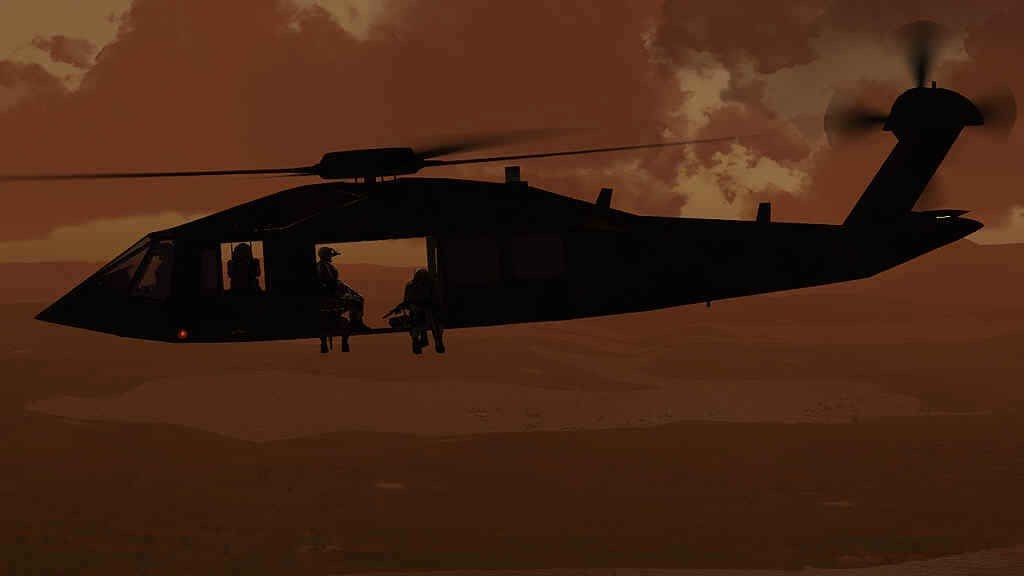
During the infiltration of the compound, the second helicopter encountered a hazardous airflow condition known as a vortex ring state and lost its lift capability. The pilot quickly responded, and began making a semi-controlled descent, burying the helicopter’s nose to keep it from tipping over. This left the aircraft pitched at a 45-degree angle, resting against the compound wall, but with no injuries. The pilot and one DEVGRU operator quickly set charges to destroy any sensitive equipment within the downed bird.
The operation had 40 minutes allocated to it, from entry to exfiltration, and it was believed that Pakistani security forces might begin to arrive on the scene, endangering the success of the mission by minute 45. With the clock ticking, the Navy operators advanced through the compound, disabling any and all opposition, breaching walls and doors with explosives. Along with the DEVGRU operators in the compound were a handful of skilled operators from the CIA Special Activities Directorate (SAD), the majority of which were veterans from the U.S. Army Special Forces.
The Special Operations team leader exclaimed over the radio, a direct link to the Joint Special Operations Command (JSOC) headquarters at Pope Field in Fort Bragg, North Carolina, “For God and country—Geronimo, Geronimo, Geronimo”. This meant that the target, with the codename Geronimo, was dead. A 5.56 NATO 77-grain OTM (open-tip match, for maximum disabling effect) fired from an H&K HK416 battle rifle had punched through the head of the founder and first leader of the Salafist-Jihadist group al Qaeda, Osama bin Laden.
From the JSOC operations centre in the converted hanger’s reinforced basement, the commander of the JSOC operation, Vice Admiral William H. McRaven coldly responded: “Geronimo EKIA” (enemy killed in action). 357 miles northbound, the collective inner circle of the Obama administration watched a video feed, with about 5 seconds delay of the operation, in the White House Situation Room. Upon hearing verification that the long wanted enemy of the United States was dead, the President uttered grimly, “We got him.”
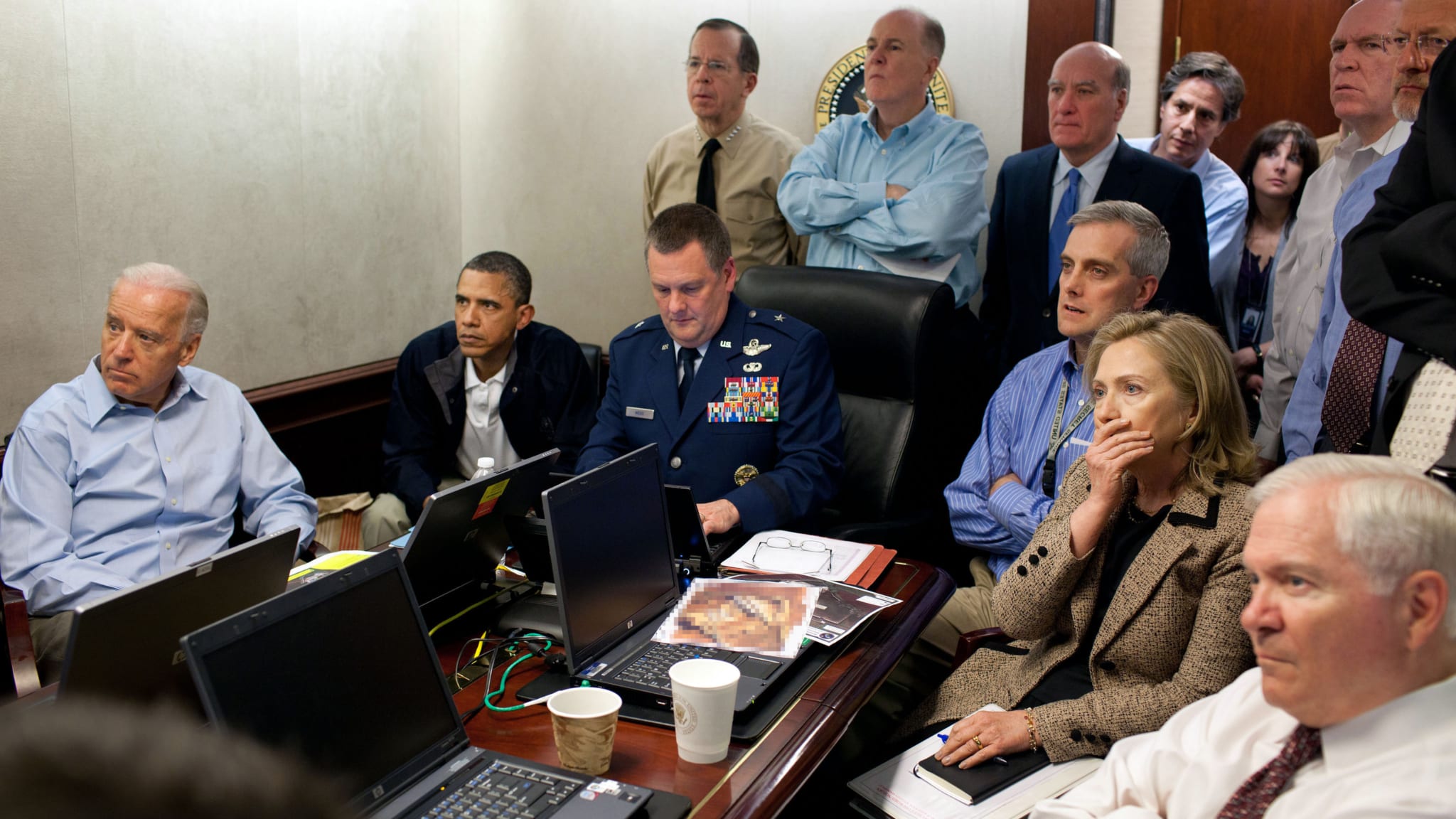
The actual breaching of the compound and subsequent disabling of any opposition force resistance had taken less than 15 minutes. 40 minutes had been allocated to the raid, but only 38 minutes had been required before exfiltration by air could take place. As the Pakistani security forces tore through the compound during the next day, all that was to be found where the dead bodies of Osama bin Laden’s four bodyguards, the burnt husk of a U.S. Army helicopter, and a courtyard full of spent brass from the battle.
The entry team flew back from Bagram Airfield, carrying the body of Osama bin Laden, along with a treasure trove of hard drives, DVDs, USB memory sticks, and papers. They had also brought one of bin Laden’s wives, Amal Ahmed Abdul Fatah, as she had been injured during the raid and was in need of medical attention. During the flight there was concern that Pakistan would shoot down the outbound helicopters in retaliation, and several U.S. Air Force jet fighters were kept on mid-air standby to intercept any attempts.
Having arrived at Bagram 86 minutes after leaving the compound, within two hours, bin Laden’s body was flown to the Nimitz-class supercarrier USS Carl Vinson in a V-22 Osprey tilt rotor aircraft, escorted by two U.S. Navy F/A-18 fighter jets. The body was buried at sea at 1020 AM the next day. The body had been washed, wrapped in a white sheet and placed in a plastic bag weighed down with 300 pounds (140 kg) of iron chains. The official reason given for proceeding in this manner, was that no country would accept the remains of the Jihadist leader.
This story has been told many times, in all shapes and forms of media. What is less talked about, is the sacrifice of one man that made it all possible.
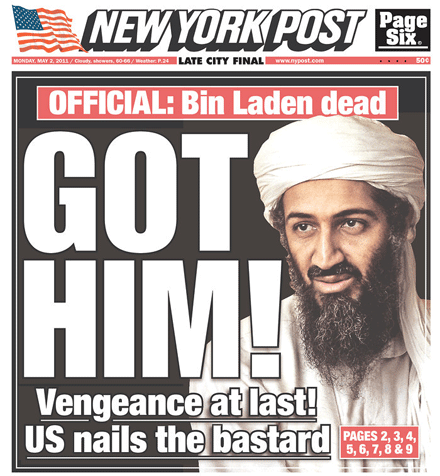
I tried to argue that America was Pakistan’s biggest supporter – billions and billions of dollars in aid, social and military assistance – but all they said was, ‘These are our worst enemies. You helped our enemies.’”
– Dr. Shakeel Afridi
Enter the Doctor
Finding Osama bin Laden had proven to be extremely difficult. The man was a sophisticated foe, one that understood the limitations of Western intelligence communities and the reliance on Signal Intercept and Intelligence (SIGINT). Ultimately, what was needed to find him was Human Intelligence (HUMINT). It has, however, been proven extremely difficult to develop reliable HUMINT capabilities for Western governments to infiltrate Islamist movements in the Central Asian and South Asian regions.
There had long been suspicions that bin Laden was hiding in Pakistan. Yet, it was not until a Khyber Agency physician, Doctor Shakeel Afridi, was brought to the attention of the U.S. intelligence community that live evidence was found.
According to sources from Erudite Group, a security and intelligence consulting firm, Dr. Afridi was brought to the CIA’s attention in early 2010 by a Jordanian intelligence operator from the Jordanian General Intelligence Directorate (GID) agency. The Doctor, who worked at the Jamrud central hospital in the Federally Administrated Tribal Areas of northwest Pakistan, had treated a man that he claimed was an al Qaeda courier. The courier often travelled to a compound in Abbottabad, allegedly to deliver messages to a high ranking al Qaeda commander. Local residents called the compound the Waziristan Haveli because they believed the owner was from Waziristan. The doctor’s information, combined with other pieces of the puzzle, led the agency to believe that there might be some validity to his claims.

The mysterious courier was positively identified, and local contractors began tracking his movement.
The operation was at this point managed by European and American intelligence contractors for the CIA, so-called green badgers. Increasingly, circumstantial evidence mounted that the al Qaeda commander in a compound in Abbottabad could be someone that the agency was most interested in.
The compound was photographed from the ground as well as the air using drones with high-resolution cameras. On a handful of occasions, a tall character could be seen in the photos. The 3D imagery of the figure showed that the man was roughly the same height as Osama bin Laden, walked with a crutch, and had several other characteristics of the most wanted man in the world.
To find out more, an on the ground operation was put together. The operation was referred to as “Operation Peter Pan,” and Dr. Afridi received the codename “Bugs Bunny.”
Afridi then began communicating directly with a CIA agent whose codename was “Peter.” The plan was to obtain a blood sample from one of the children living in the Abbottabad compound, so that DNA tests could determine whether or not they were relatives of bin Laden. To accompany the doctor, two female paramedical staffers from the Khyber Agency were involved. These two did not know about the CIA’s involvement in the operation, believing that events were being carried out on behalf of one of the other Pakistani intelligence agencies.
To accomplish the mission at hand, obtaining blood samples, a fake hepatitis B vaccination programme was created. Throughout the operation, the doctor was paid by “Peter” but was not informed of the intent or what the agency suspected might have been uncovered. Instead, Dr. Afridi was told by “Peter” that they suspected the man could be a high ranking intelligence operative working with the nearby Kakul military academy, the prestigious “West Point” of Pakistan. It was implied that the information collected could be used on the internal political scene.
The doctor was able to draw blood from at least three children and one adult woman inside the compound, according to sources familiar with the matter. As part of this, he was also able to give some indicators of where different people were and how at least one part of the compound was structured. This information, however, had mostly already been gathered through other means. The doctor also said that he believed there to be at least one individual inside the compound that was sick, as there were medicine vials and discarded packages lying in a burn pile on the compound.
It was through the doctor’s blood samples that a match was found. The adult woman proved a match for a known affiliate of Osama bin Laden. While this evidence was deemed neither conclusive, nor immediately actionable, it was considered vital, and when put into the greater puzzle along with other information, it was deemed to be credible.
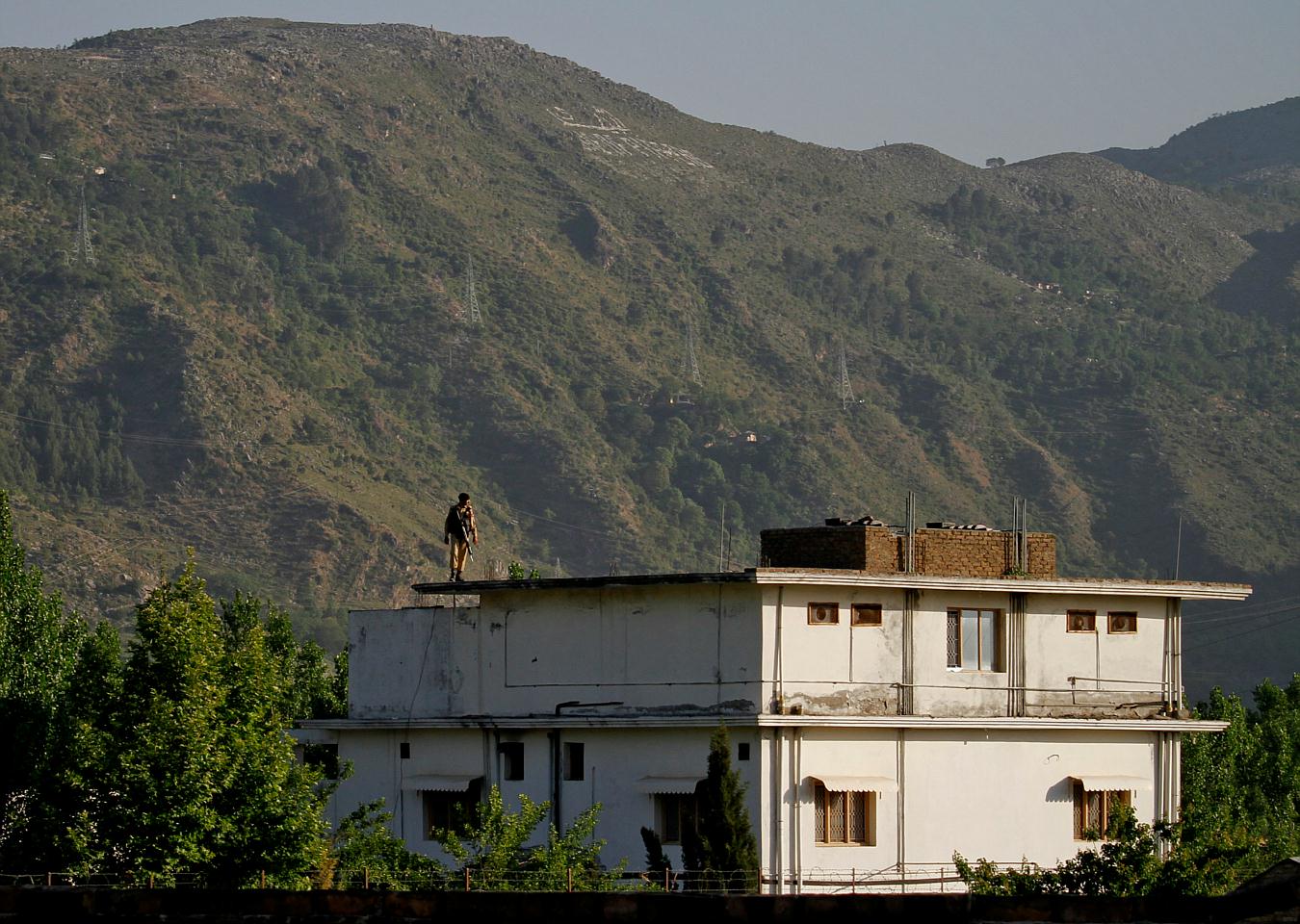
While the CIA was the showrunner of the operation, it quickly came to include a multitude of security agencies. The National Security Agency (NSA), National Geospatial-Intelligence Agency (NGA), the Office of the Director of National Intelligence (ODNI) and U.S. Defense Department all became part of the intelligence-gathering effort. By late 2010, the operation was “was so extensive and costly that the CIA went to Congress in December to secure authority to reallocate tens of millions of dollars within assorted agency budgets to fund it.”
By late April, the doctor began worrying about what was actually happening.
A few weeks earlier he had handed over blood samples and began expressing concern that he was being used by the Americans for something other than what he had been led to believe. He had started putting the puzzle pieces together.
According to sources from Erudite Group, a security and intelligence consulting firm, Dr. Afridi was brought to the CIA’s attention in early 2010 by a Jordanian intelligence operator from the Jordanian General Intelligence Directorate (GID) agency.
On May 2nd, Operation Neptune Spear took place. In the days that followed, the doctor began to fear for his role in the operation, and on May 8th he tried to flee into Afghanistan through the Torkham border crossing. The doctor hoped he would be able to hide inside the border area controlled by the Lashkar-e-Islam (LEI) jihadist group. The group is one of the many Islamist groups that fight against the central Islamabad government of Pakistan and is deemed a terror group by both Pakistan and the U.S. alike. The group operates primarily inside the Tribal areas, on the Pakistani side, and the doctor had previously treated members and even donated a significant amount of money to them.
The doctor’s escape, however, was not meant to be. By the time he made it to the border crossing, a military unit was already waiting for him. He was apprehended and brought to Pakistan’s northwestern border city of Peshawar.
What became of the Doctor?
Doctor Shakeel Afridi was, on May 23, 2012, sentenced to 33-years in jail. What was his crime? Pakistani authorities say that he committed treason. The government insists that it did not punish him for his involvement in the bin Laden raid, but rather for his relationship with the LEI group.
17 other healthcare workers associated with the doctor from across the Khyber area were also detained, although the majority have been reportedly released after having given testimony against the doctor.
In the months leading up to the trial, Pakistani authorities even went as far as to deny that Dr. Afridi had been involved in anything relating to the bin Laden raid. The U.S. responded to this claim publicly, stating in January 2012, that Dr. Afridi had indeed been vital to the operation.
Then-Defense Secretary Leon Panetta acknowledged the doctor’s role in bin Laden’s discovery, stating he was extremely helpful in the operation against the al Qaeda leader. Then-Secretary of State Hillary Clinton personally attempted to intervene on behalf of the doctor, to secure his release but was ultimately unsuccessful.
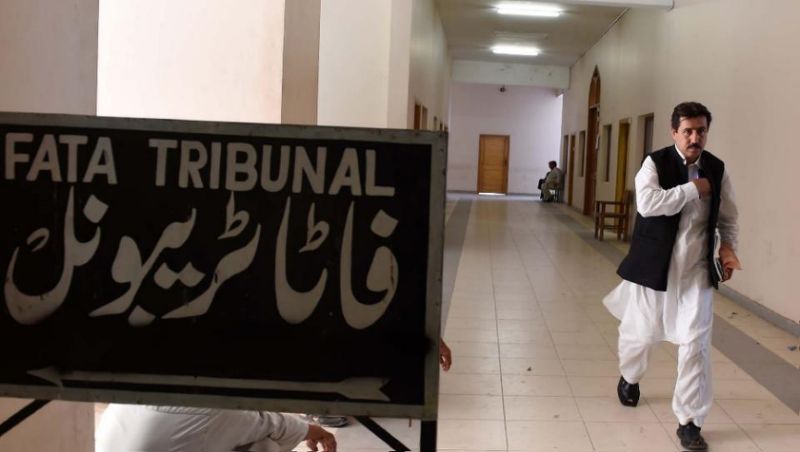
While awaiting trial, Fox News reporter Dominic DiNatale was able to interview him. During the interview, the doctor was quoted as having said, “I tried to argue that America was Pakistan’s biggest supporter – billions and billions of dollars in aid, social and military assistance – but all they said was, ‘These are our worst enemies. You helped our enemies.’”
The doctor also claimed to have been tortured at the headquarters of Pakistan’s primary intelligence service, the Inter-Services Intelligence (ISI) in Abpara, using cigarette burns and electric shock. After the interview, the Fox News reporter was expelled from Pakistan, and Dr. Afridi’s court-appointed lawyer renounced the interview. Kib Kaifee, the Fox News producer of the segment, was also arrested by the ISI and fled the country upon release.
In February, 2012 the Pakistani government demolished the Osama bin Laden compound.
After the sentencing, the U.S. continued to pressure its ally. In the immediate sense, the harshest penalty dealt by the U.S. against Pakistan was when the U.S. Senate cut 33 million dollars in aid to Pakistan over the conviction, $1 million per year of the sentence.
On August 29th, 2013, Pakistani courts agreed to carry out a retrial. Many thought this would be the way out, that the doctor would be released on a technicality and then expedited along with his wife out of the country. Instead, on November 18, 2013, the doctor was charged and found guilty of the murder of a patient he had treated in 2008. He was sentenced to a reduced sentence of 24 years in prison.
In March 2015, Afridi’s non-court appointed lawyer, Samiullah Khan Afridi, was shot dead in Peshawar by a Pashto Taliban gunman. The Pakistani Taliban faction Jamaatul Ahrar claimed responsibility for the murder.
Since then, the U.S. government has continued its efforts to get the doctor released.
According to exclusive sources, current Secretary of Defense James Mattis personally reached out in March to the Pakistani government with the offer of exchanging the doctor for several Pakistani jihadists that are in jail in the U.S., including Aafia Siddiqui, a Pakistani national serving an 86-year prison term in the U.S. after the attempted murder of an American soldier in Afghanistan. On May 2nd, 2018 that offer was refused.
Dr. Afridi is currently being kept in isolation, for his own protection. Ultimately, the doctor’s real crime was to have helped bring an enemy of the world to justice, and in so doing, embarrassing Pakistan – a crime he is not likely to survive having committed.
The Strange Strained History of US – Pakistan Relations
That Osama bin Laden would be found in a country that claims to be an ally of the United States surprised few. That this country would turn out to be Pakistan, surprised virtually none. Pakistan is a U.S.-supported pseudo-democracy and de facto dictatorship whose leadership either comes from the military, or from the societal elite interchangeably.
Pakistan’s Inter-Services Intelligence often plays the role of kingmaker both inside and outside the country. To the Western audience, the ISI are primarily known for their part in the Afghan insurgency against the Soviet Union, where it was the receiver of Western funds and arms to give to the Mujahidin. The ISI selected and vetted any Afghan fighter group that sought support, and the agreement with the U.S. was that no arms were to be given to any Afghan group unless it was explicitly authorised by the ISI to do so.
The U.S. called its operation to disrupt the Soviet military and political presence in Afghanistan “Operation Cyclone” which ran from 1979 to 1989. It stopped when the Soviets were forced out of Afghanistan on February 15, 1989. All told, the operation would cost the U.S. taxpayers just short of 2 billion dollars. The financial cost to the Soviets to combat a well-armed Mujahadin is unknown, but believed to be significantly higher. The human cost is mostly known though. By the time the Soviets left Afghanistan, Russia had suffered over 14,000 killed and missing, and over 50,000 wounded.
Operation Cyclone did not just provide hard currency, but also arms, all of which were funneled exclusively through ISI. ISI supported favoured ethnic groups, focusing primarily on Pashto groups, and groups with the Kingdom of Saudi Arabia’s support. In reality, the operation on the Pakistani side saw a much higher financial gain than the 1.95 billion spent by the U.S., as it was often matched or even outmatched by supporting Arab Gulf State nations, such as the Saudis. Aspects of this drama, in a more action-packed variation, have been memorialised in the Hollywood blockbuster “Charlie Wilson’s War.” Personally, I would advise those interested to instead read the book the movie was based on, along with Steve Coll’s excellent masterpiece “Ghost Wars.”
While the big bucks stopped flowing through the Operation Cyclone pipeline in 1989, the U.S. did continue to funnel money through the ISI to Afghan groups throughout the first civil war in Afghanistan, 1989-1992. This civil war was mostly the last twitches of proxy warfare from the Cold War, as both the U.S. and the Soviets continued to fund various groups.
While the U.S. was busy supporting fighters in Afghanistan in the name of driving the last nails into the Soviet’s coffin, the ISI was busy planning for what would come after the civil war. It began focusing more on supporting ethnic Pashto leaders. This support came at the expensive of the U.S.-backed militia fighters, such as Ahmad Shah Massoud and Abdul Rashid Dostum. Neither Massoud nor Dostum were Pashto. Massoud was an ethnic Tajik, and Dostum is an Uzbek, and both of them were more aligned with non-Pakistan intelligence services. ISI saw them as threats to a Pashto-ethnic coalition and control zone and thus found them unappealing.
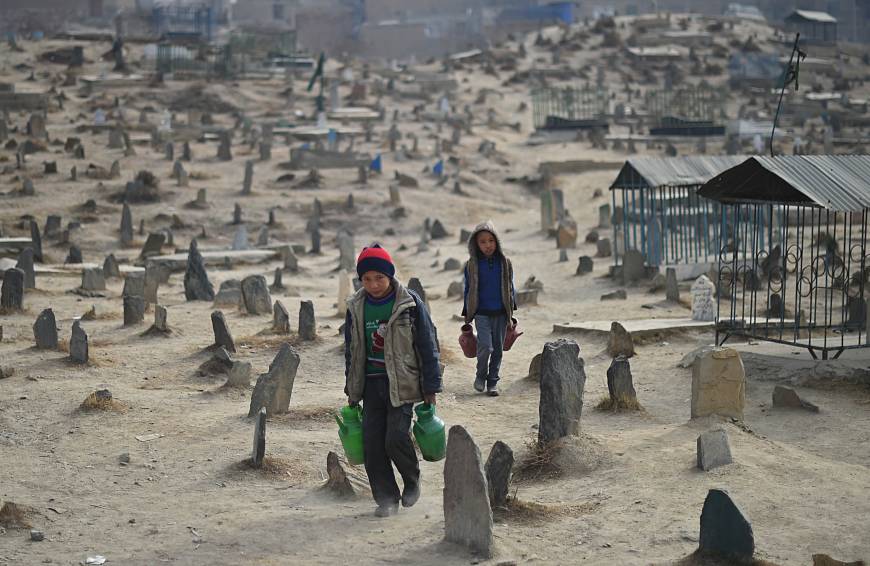
Throughout the civil war groups would form alliances for the day, promising life-long friendships, only to break them an hour later. Peace accords were attempted and failed. The end of the first civil war in 1992 brought intermittent episodes of peace, lasting just barely long enough for the warring parties to receive shipments of new arms and munitions. It also left thousands killed, with half a million residents having fled the war-torn capital, Kabul.
The second civil war raged between 1992 to 1996. By 1994, the Taliban militia had entered the stage. First, the Taliban operated as part of other Pashto militia groups, but it soon emerged as a standalone entity. Amidst the turbulence, in part designed by outside forces to ensure that Afghanistan would not become a unified entity in the region, the ISI found the Taliban’s Pashto ethnic configuration, and its leadership of Pashto warlord Mohammed Omar appealing. Omar had previously been trained by the ISI in Pakistan during the 1980s, on the Saudi-U.S. dime no less, to fight the Soviets. With the Soviets largely gone, Omar was more than willing to apply his skill set, leadership and fighters towards the goal of becoming the leader of the fractured tribal-state entity the world knew as Afghanistan.
And the Pakistani intelligence services were more than willing to give him a helping hand.
Under Omar’s leadership and ISI’s patronage, Afghanistan would become a haven for particular branches of Islamic militants, the most famous of which was Osama bin Laden. That Omar allowed bin Laden, and his al Qaeda group to operate within Afghanistan would ultimately be what caused the Taliban to lose power in October 2001.
Bin Laden had created his al Qaeda group in 1988. This after he found his brethren in the Afghan Maktab al Khidamat, a group that he had organised with several other noteworthy jihadists, Abdullah Azzam and Ayman al-Zawahiri, to be inefficient and unfocused. In the beginning, bin Laden was considered a nobody. But just two years after the creation of al Qaeda, in 1990, the FBI raided a safe house in New Jersey to find al Qaeda member El Sayyid Nosair, along with plans to blow up several New York City skyscrapers. While the U.S. security agencies could easily link the planning to bin Laden and his cohorts, they could do little to arrest him at this point.
By then, bin Laden was quickly rising through the ranks of the Jihadist and Islamist circles, and was the focus of the CIA’s investigations. In 1994 bin Laden was operating out of Sudan, and the U.S. government sent the legendary paramilitary and intelligence operator Billy Waugh to assess the situation. Waugh advised that he could capture bin Laden if given permission. The Clinton administration denied the request but advised that they wanted to have continuing eyes on the Jihadist leader. This led to bin Laden attempting to assassinate Waugh, and ultimately escape to the safety of Afghanistan.
By 1996, bin Laden had become so useful for the ISI and Taliban that he became an intricate part in setting up ISI supported training camps for jihadist fighters, even operating an international airline. Ariana Afghan Airlines ferried militants, arms, cash and opium from Afghanistan to the hubs of the United Arab Emirates and Pakistan, while providing false identifications to members of bin Laden’s growing network of terrorists. Under bin Laden, Ariana airline became known as the “terrorist taxi service.” Russian arms smuggler Viktor Bout – made consumer grade famous by the movie “Lord of War” starring Nicholas Cage – became involved in operations, and the airline began delivering arms shipments across the developing world.
By summer that year, bin Laden declared an official jihad, or fatwa entitled “Declaration of War against the Americans Occupying the Land of the Two Holy Places” against the U.S., published by the London-based Islamic newspaper Al Quds Al Arabi. The jihad was about the U.S. remaining in Saudi Arabia near Mecca and Medina, the two holiest places in Islam. This was deemed an occupation by infidels by bin Laden.
By 1998, bin Laden’s al Qaeda was operating as fighters, either for pay or for religion in Afghanistan, Sudan, the Balkans and Albania. Richard Clarke, the Director of the CIA’s Counterterrorist Center, reported to then-President Bill Clinton that al Qaeda was preparing for widespread attacks against the U.S., including hijacking civilian airplanes. Members inside the CIA advised the President that the best course of action was to have bin Laden permanently disabled as a threat.
The proposal, and follow-up suggested options were met with resistance from the White House and ultimately scrapped.
Under Omar’s leadership, and the ISI’s patronage, the Taliban would rule over Afghanistan until October 2001. They would likely have continued to rule, with a Quran in one hand and a bloody sword in the other, had they not been dethroned by a U.S.-Afghan Warlord coalition. The Afghan Warlord coalition, consisting of the Tribal militant groups Jamiat-e Islami, Junbish-i Milli, Hizb-i-Wahdat, Harakat-i-Inqilab-i-Islami and the Eastern Shura, jointly made up a group known as the Northern Alliance.
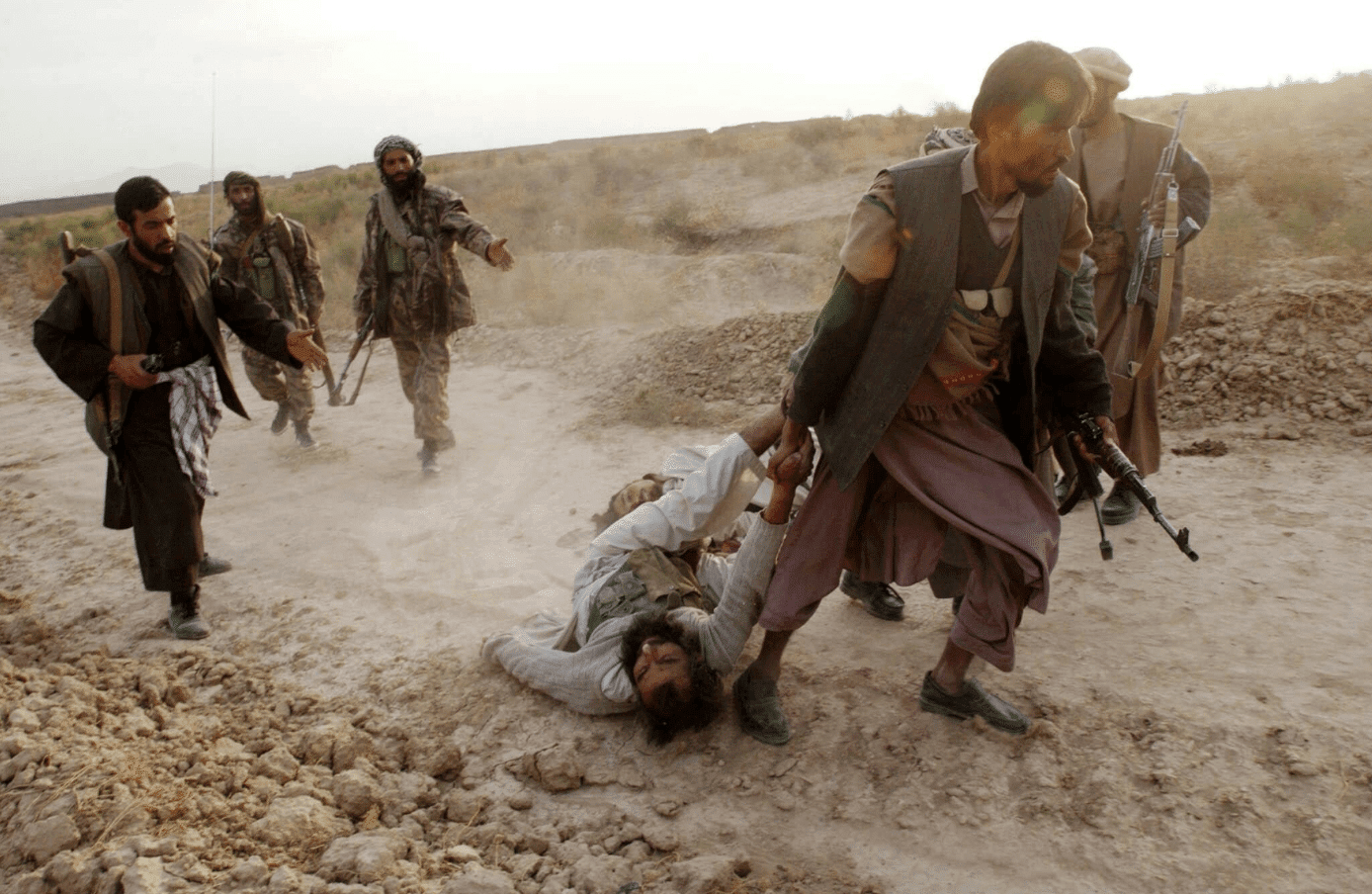
The Northern Alliance, along with members of the CIA and the U.S. Army Special Forces community quickly advanced on Kabul, and removed the Taliban from power there in October 2001. Shortly after that, the UN and the U.S. installed a new government led by the Soviet-educated Pashto bureaucrat and politician Hamid Karzai as President. He was in turn succeeded in an election that can only be referred to as a charade in 2014.
The Taliban remain to this day, and the war still rages on in Afghanistan between them and the U.S.-supported central Kabul government. It is generally believed that once the U.S. decides to leave Afghanistan, they will quickly come back to power.
John Sjoholm, Lima Charlie News
[Edited by Anthony A. LoPresti]
John Sjoholm is Lima Charlie’s Middle East Bureau Chief, Managing Editor, and founder of the consulting firm Erudite Group. A seasoned expert on Middle East and North Africa matters, he has a background in security contracting and has served as a geopolitical advisor to regional leaders. He was educated in religion and languages in Sana’a, Yemen, and Cairo, Egypt, and has lived in the region since 2005, contributing to numerous Western-supported stabilisation projects. He currently resides in Jordan. Follow John on Twitter @JohnSjoholmLC
Lima Charlie provides global news, insight & analysis by military veterans and service members Worldwide.
For up-to-date news, please follow us on twitter at @LimaCharlieNews
In case you missed it:

![Image The Killing of Osama Bin Laden. Is there a Doctor in the House? [Lima Charlie News]](https://limacharlienews.com/wp-content/uploads/2018/05/The-Killing-of-Osama-Bin-Laden.-Is-there-a-Doctor-in-the-House.png)
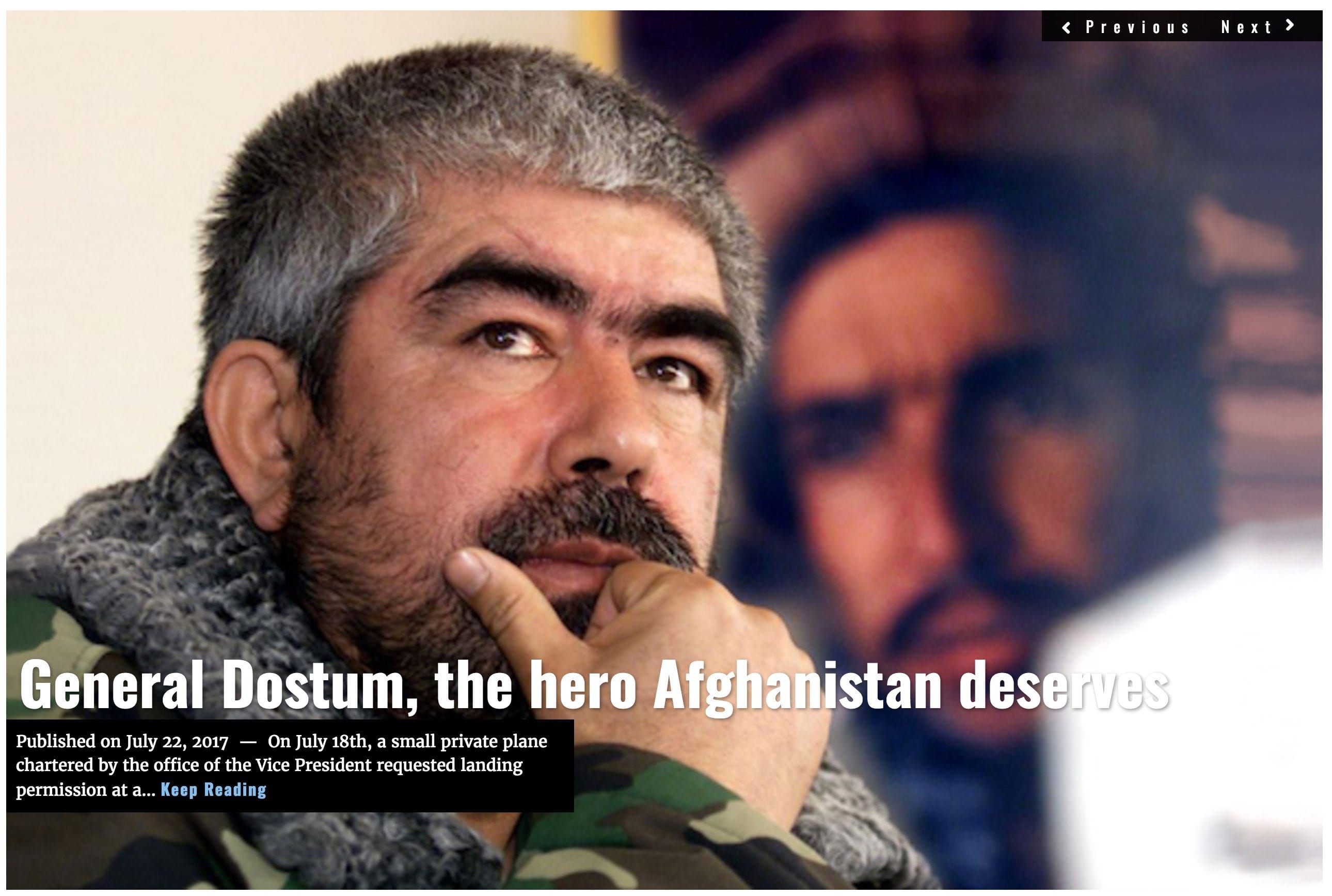

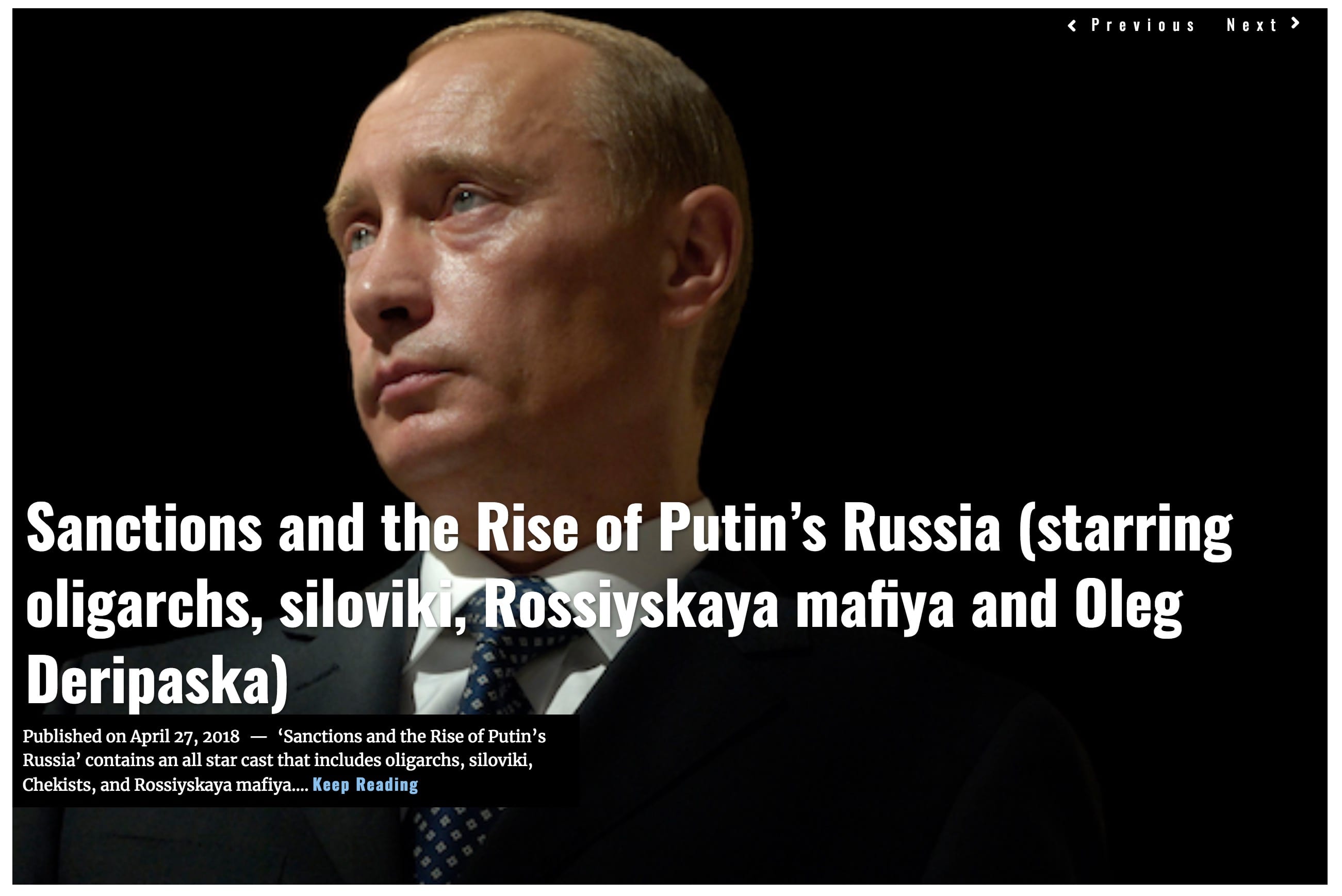
![Image Strike a deal with which devil? The many faces of the Taliban [Lima Charlie News][Image: Anthony A. LoPresti]](https://limacharlienews.com/wp-content/uploads/2019/03/Many-faces-of-the-Taliban-Lima-Charlie-News-Anthony-LoPresti-480x384.png)
![Image Welcome to Jordan! A Den of Spies and Fajitas for Dinner [Lima Charlie News]](https://limacharlienews.com/wp-content/uploads/2018/09/Welcome-to-Jordan-A-Den-of-Spies-and-Fajitas-for-Dinner-480x384.png)
![Image NYPD in Afghanistan, ISIS suffers key setback [Lima Charlie News][NATO photo: Erickson Barnes]](https://limacharlienews.com/wp-content/uploads/2018/04/NYPD-in-Afghanistan-ISIS-suffers-key-setback-480x384.jpg)
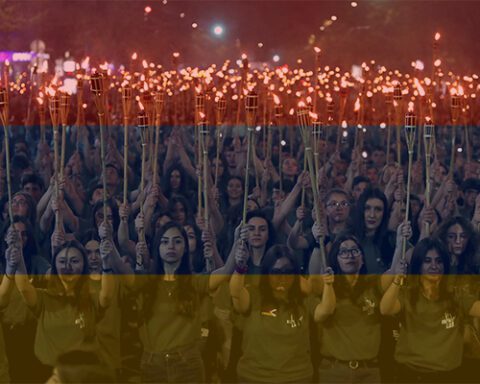



![Blossoming Russo-Turkish alliance leaves U.S., NATO behind [Lima Charlie News]](https://limacharlienews.com/wp-content/uploads/2019/07/Russia-Turkey-alliance-leaves-U.S.-NATO-behind-480x384.png)
![Image Strike a deal with which devil? The many faces of the Taliban [Lima Charlie News][Image: Anthony A. LoPresti]](https://limacharlienews.com/wp-content/uploads/2019/03/Many-faces-of-the-Taliban-Lima-Charlie-News-Anthony-LoPresti-150x100.png)
![Image Welcome to Jordan! A Den of Spies and Fajitas for Dinner [Lima Charlie News]](https://limacharlienews.com/wp-content/uploads/2018/09/Welcome-to-Jordan-A-Den-of-Spies-and-Fajitas-for-Dinner-150x100.png)